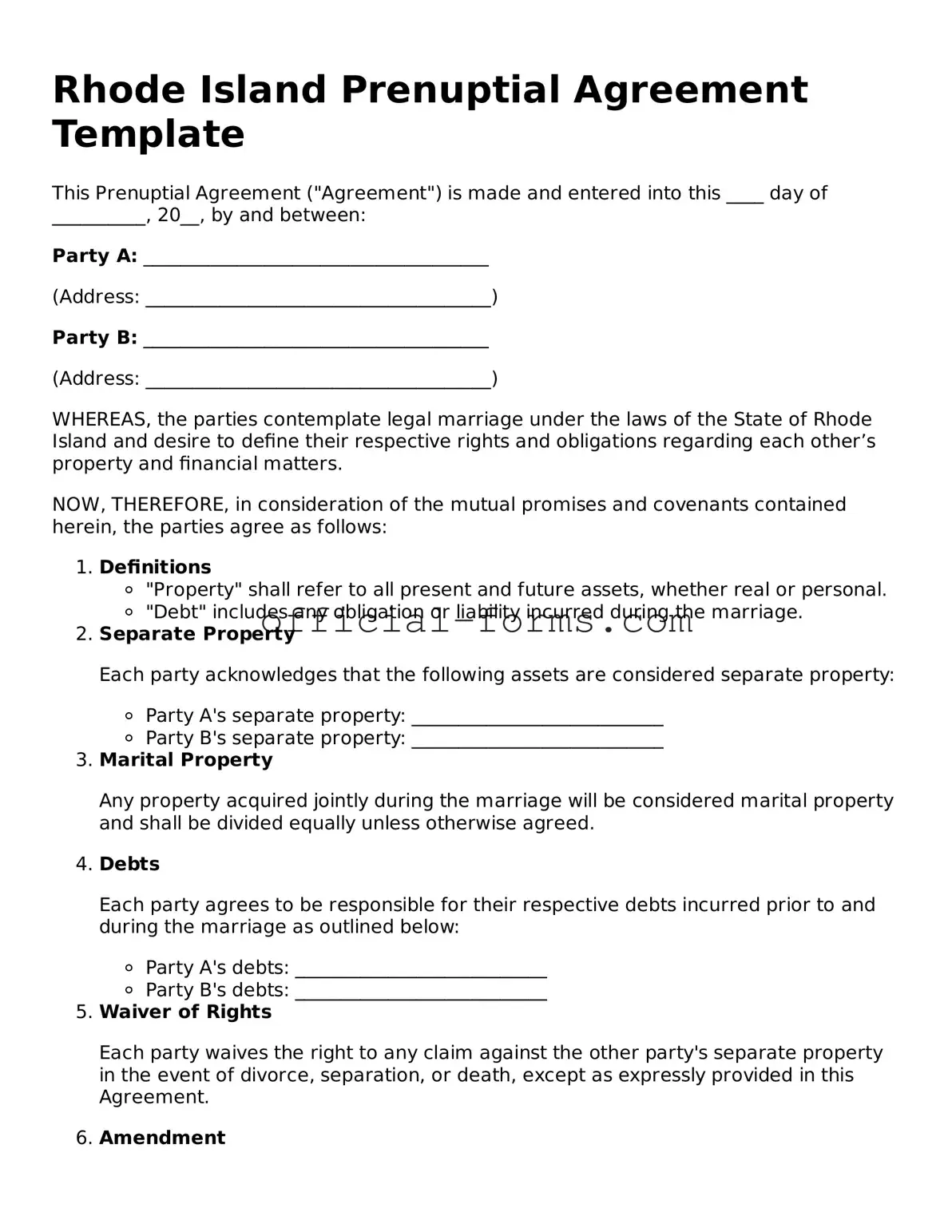Official Rhode Island Prenuptial Agreement Document
A Rhode Island Prenuptial Agreement form is a legal document that couples use to outline the distribution of assets and responsibilities in the event of a divorce or separation. This form serves to protect individual interests and clarify financial expectations before entering into marriage. Understanding its purpose and requirements can provide peace of mind for those considering this important step.
Open My Prenuptial Agreement Now
